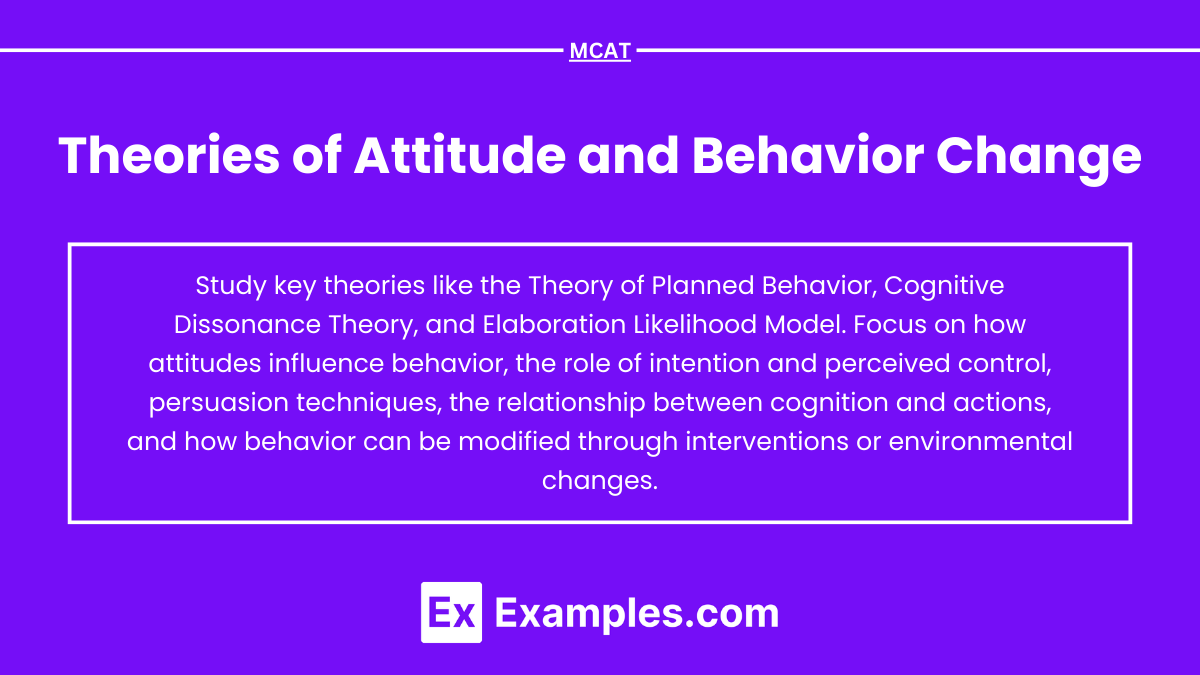Theories of attitude and behavior change explore how individuals modify beliefs and behaviors through cognitive, social, and environmental influences. These frameworks, including the Theory of Planned Behavior, Social Cognitive Theory, Transtheoretical Model, and Elaboration Likelihood Model, help explain why people adopt or resist change. Factors like self-efficacy, motivation, persuasion, and cognitive dissonance play crucial roles in shaping behaviors.
Learning Objectives
In studying "Theories of Attitude and Behavior Change" for the MCAT, you should learn to understand key models such as the Theory of Planned Behavior (TPB), Transtheoretical Model, Social Cognitive Theory, and the Elaboration Likelihood Model (ELM). Analyze how these frameworks explain the development, reinforcement, and modification of attitudes and behaviors. Evaluate the role of factors like self-efficacy, motivation, cognitive dissonance, and social influence in behavior change. Additionally, explore how these theories are applied in health interventions, behavior modification programs, and clinical practice, and apply your understanding to interpreting behavior-related scenarios in MCAT practice passages.
Theories of attitude and behavior change explain how individuals adopt, modify, or abandon behaviors and beliefs. Understanding these theories is crucial for analyzing human actions, which have applications in medicine, health promotion, and behavioral interventions. The MCAT expects you to grasp key frameworks, recognize influencing factors, and apply these concepts in scenarios.
1. Theory of Planned Behavior (TPB)
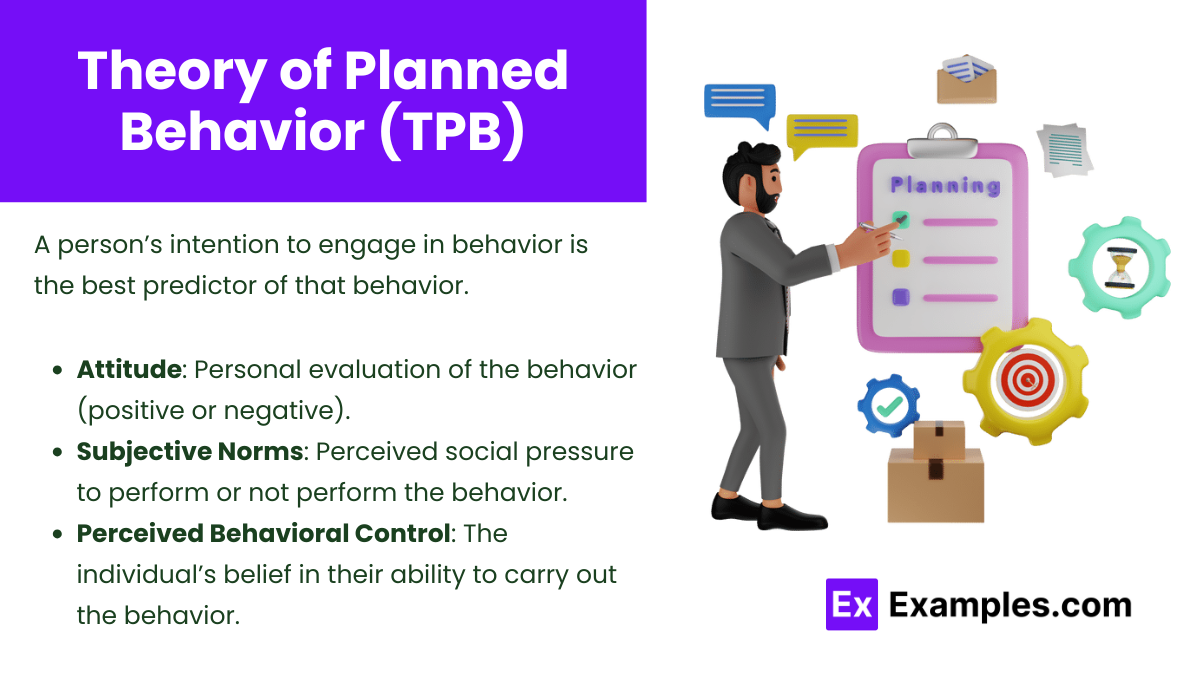
Concept: A person’s intention to engage in behavior is the best predictor of that behavior.
Components:
Attitude: Personal evaluation of the behavior (positive or negative).
Subjective Norms: Perceived social pressure to perform or not perform the behavior.
Perceived Behavioral Control: The individual’s belief in their ability to carry out the behavior.
Example: A student intends to exercise if they have a positive attitude toward it, believe their friends approve, and feel capable of maintaining a workout routine.
2. Transtheoretical Model (Stages of Change)
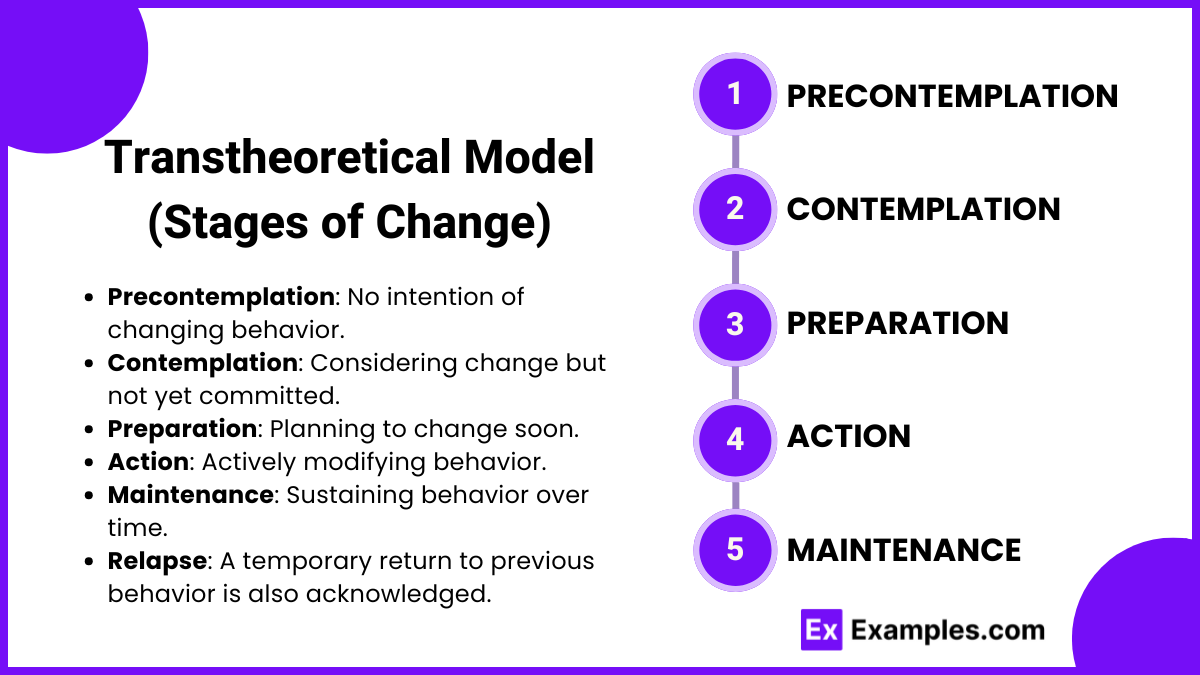
Concept: Behavior change occurs in stages over time.
Stages:
Precontemplation: No intention of changing behavior.
Contemplation: Considering change but not yet committed.
Preparation: Planning to change soon.
Action: Actively modifying behavior.
Maintenance: Sustaining behavior over time.
Relapse: A temporary return to previous behavior is also acknowledged.
Application: This model is often used in health settings, like smoking cessation programs.
3. Social Cognitive Theory (SCT)
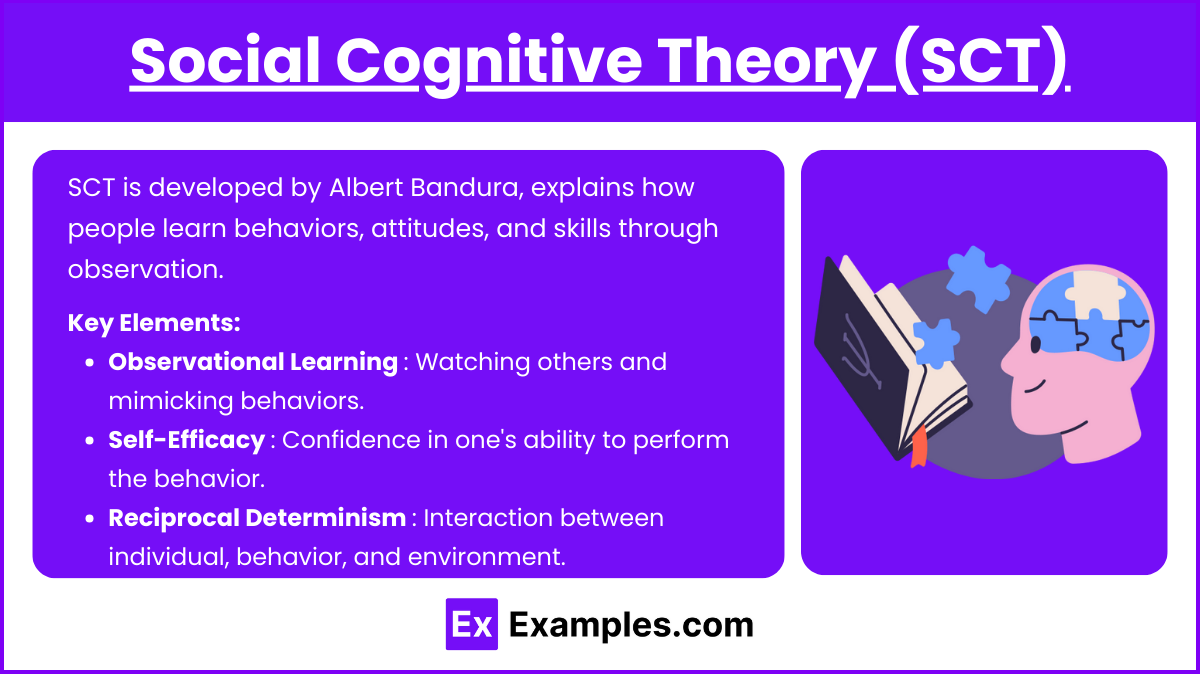
Social Cognitive Theory (SCT), developed by Albert Bandura, explains how people learn behaviors, attitudes, and skills through observation, imitation, and modeling. It emphasizes the interplay of personal, behavioral, and environmental influences, shaping learning and behavior in social contexts.
Key Elements:
Observational Learning: Watching others and mimicking behaviors.
Self-Efficacy: Confidence in one's ability to perform the behavior.
Reciprocal Determinism: Interaction between individual, behavior, and environment.
Example: A person begins exercising after watching their peers engage in fitness routines and developing confidence in their own abilities.
4. Elaboration Likelihood Model (ELM)
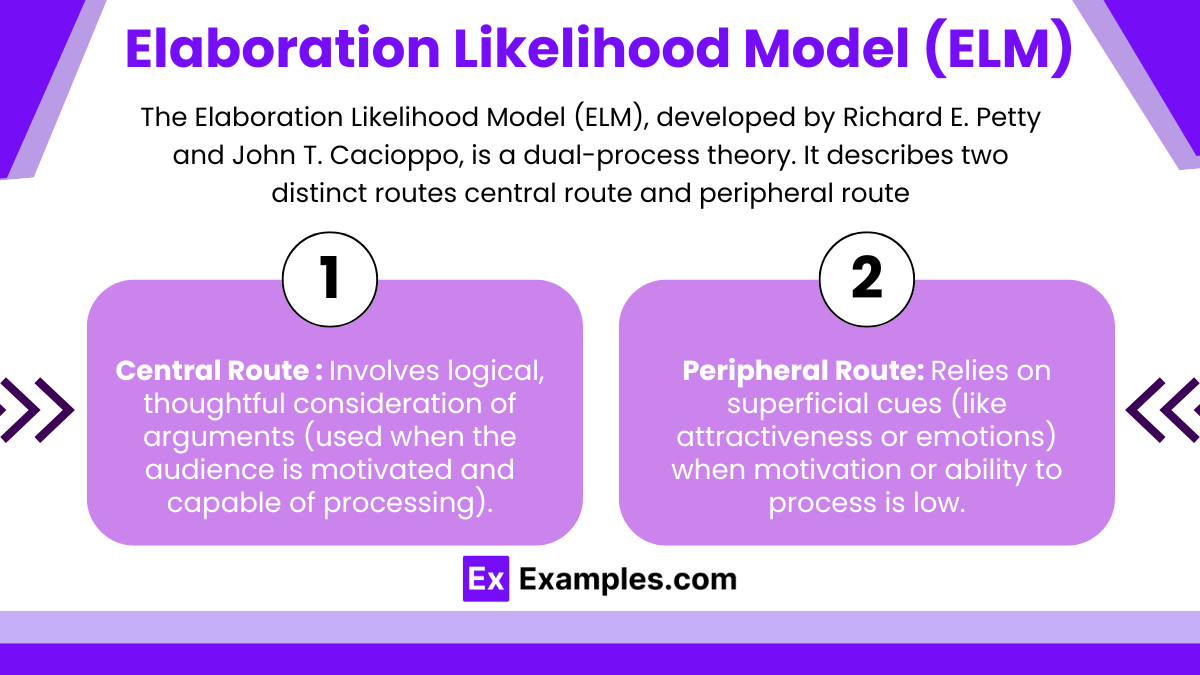
The Elaboration Likelihood Model (ELM), developed by Richard E. Petty and John T. Cacioppo, is a dual-process theory explaining how people are influenced by persuasive messages. It describes two distinct routes for processing information: the central route and the peripheral route. The route taken depends on the individual’s motivation and ability to think critically about the message.
Central Route: Involves logical, thoughtful consideration of arguments (used when the audience is motivated and capable of processing).
Peripheral Route: Relies on superficial cues (like attractiveness or emotions) when motivation or ability to process is low.
Example: Health campaigns use both logical facts (central) and emotional appeals (peripheral) to influence people.
Factors Influencing Attitude and Behavior Change
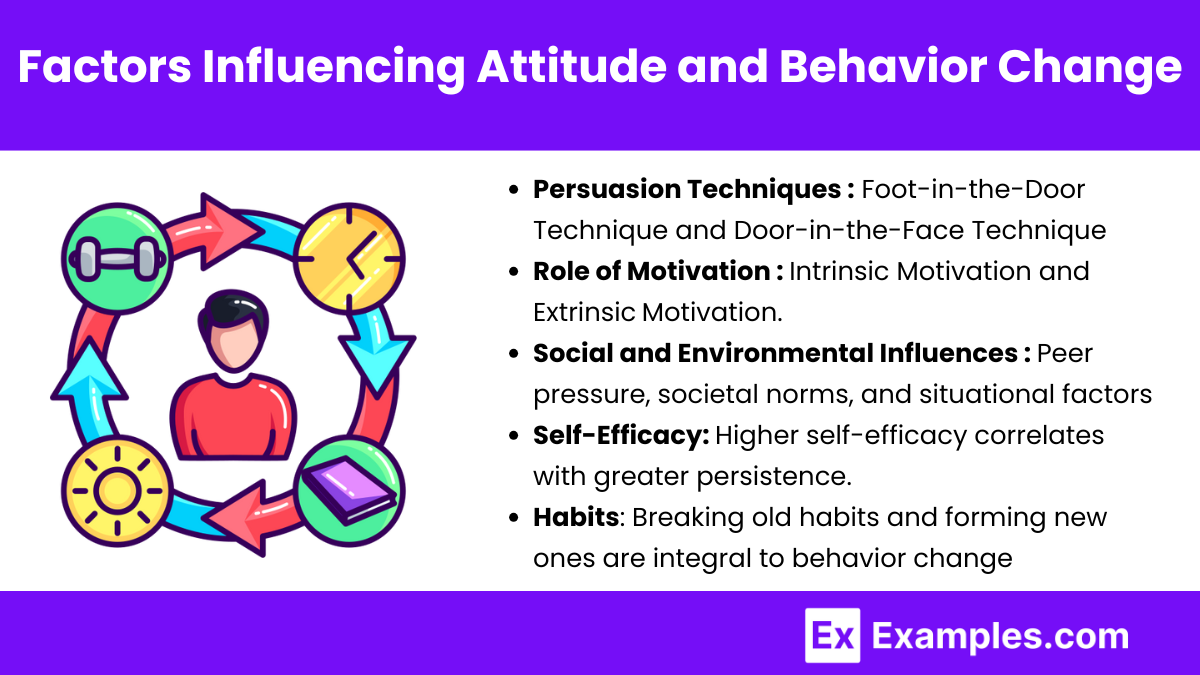
Persuasion Techniques:
Foot-in-the-Door Technique: Asking for a small request first, followed by a larger request.
Door-in-the-Face Technique: Making a large request first, expecting refusal, then following with a smaller, more reasonable request.
Role of Motivation:
Intrinsic Motivation: Behavior driven by internal rewards.
Extrinsic Motivation: Behavior motivated by external rewards or punishments.
Social and Environmental Influences:
Peer pressure, societal norms, and situational factors can play significant roles in behavior change.
Self-Efficacy: Higher self-efficacy correlates with greater persistence in adopting or changing behavior.
Habits: Breaking old habits and forming new ones are integral to behavior change. Techniques like implementation intentions (if-then plans) can aid in developing new behaviors.
Examples
Example 1: Theory of Planned Behavior (TPB)
A young adult intends to quit smoking after realizing that smoking is harmful to health (positive attitude). Their friends and family encourage them to quit (subjective norm), and they believe they can stick to the plan with the help of nicotine patches (perceived behavioral control). This theory explains how intentions, shaped by internal and external factors, are strong predictors of behavior change.
Example 2 :Transtheoretical Model (Stages of Change)
A patient struggling with obesity is initially in the contemplation stage, considering weight loss. After researching diet plans, they move to the preparation stage by setting small goals. In the action stage, they begin exercising regularly and eating healthier foods. Eventually, they reach the maintenance stage, where they continue their healthy habits long-term to prevent relapse. This model highlights that behavior change occurs in gradual stages over time.
Example 3 : Social Cognitive Theory (SCT)
A diabetic patient starts monitoring their blood glucose levels after attending a support group where others shared how self-monitoring improved their health. Observing positive outcomes in peers (observational learning) increases their confidence (self-efficacy). Over time, the patient’s environment, behavior, and personal beliefs interact to reinforce this new habit. SCT demonstrates the power of role models and self-belief in facilitating behavioral changes.
Example 4 : Elaboration Likelihood Model (ELM)
A public health campaign promoting vaccination uses two strategies: a central route by providing detailed scientific evidence about vaccine safety and efficacy and a peripheral route by using celebrities to endorse the vaccine. Individuals motivated to process the information deeply are persuaded by facts, while others with lower involvement may be influenced by the celebrity’s endorsement. This theory explains how different types of persuasion are used to change attitudes.
Example 5 : Cognitive Dissonance Theory
A person who frequently consumes fast food learns that it is a leading cause of heart disease. Experiencing discomfort from the inconsistency between their behavior and knowledge, they resolve the dissonance by either changing their behavior (reducing fast food intake) or justifying it (convincing themselves that occasional indulgence isn’t harmful). This theory explains how individuals strive to reduce psychological discomfort by aligning their actions with their beliefs.
Practice Questions
Question 1
According to the Theory of Planned Behavior (TPB), which of the following factors is most critical in predicting an individual's behavior?
A) Social approval of the behavior
B) The individual's intention to perform the behavior
C) The availability of resources to perform the behavior
D) Observing others perform the behavior
Recommended Answer: B) The individual's intention to perform the behavior
Explanation:
The Theory of Planned Behavior (TPB) emphasizes that the primary predictor of behavior is intention. Intention reflects the individual's readiness to perform a behavior and is influenced by three factors:
Attitude toward the behavior (positive or negative feelings about the action).
Subjective norms (social pressure from others).
Perceived behavioral control (belief in one's ability to perform the action).
While social approval (A) and observing others (D) can indirectly influence behavior through subjective norms, the intention to act remains the strongest predictor in this theory. Availability of resources (C) is related to perceived behavioral control but does not directly predict behavior on its own.
Question 2
Which stage in the Transtheoretical Model of Behavior Change involves the individual actively working to modify their behavior?
A) Precontemplation
B) Contemplation
C) Action
D) Maintenance
Recommended Answer: C) Action
Explanation:
The Transtheoretical Model of Behavior Change (Stages of Change) outlines several phases in behavior modification:
Precontemplation: The individual is not yet considering change.
Contemplation: The individual is thinking about change but has not committed.
Preparation: Plans to change soon are being made.
Action: The individual actively works on changing the behavior.
Maintenance: The new behavior is sustained over time.
The Action stage (C) specifically refers to the phase where a person implements new behaviors, such as quitting smoking or starting a workout routine. Precontemplation (A) and Contemplation (B) involve earlier phases of consideration, and Maintenance (D) refers to long-term sustainability of the change.
Question 3
In the Elaboration Likelihood Model (ELM), when are people more likely to use the peripheral route of persuasion?
A) When they are highly motivated to process the message
B) When they lack the ability to process the message
C) When the message contains strong, logical arguments
D) When they are personally involved in the topic
Recommended Answer: B) When they lack the ability to process the message
Explanation:
The Elaboration Likelihood Model (ELM) describes two routes of persuasion:
Central route: Involves careful, thoughtful evaluation of arguments and is used when people are motivated and able to process the message.
Peripheral route: Relies on superficial cues (such as the attractiveness of the speaker or emotional appeals) and is used when people lack motivation or ability to engage deeply with the message.
The peripheral route is more likely to be used when individuals lack the ability to process the message due to time constraints, distractions, or cognitive overload (B). Conversely, when people are highly motivated (A) and the message is logical (C), the central route is used. D refers to the central route as well, since personal involvement increases motivation to process information.

